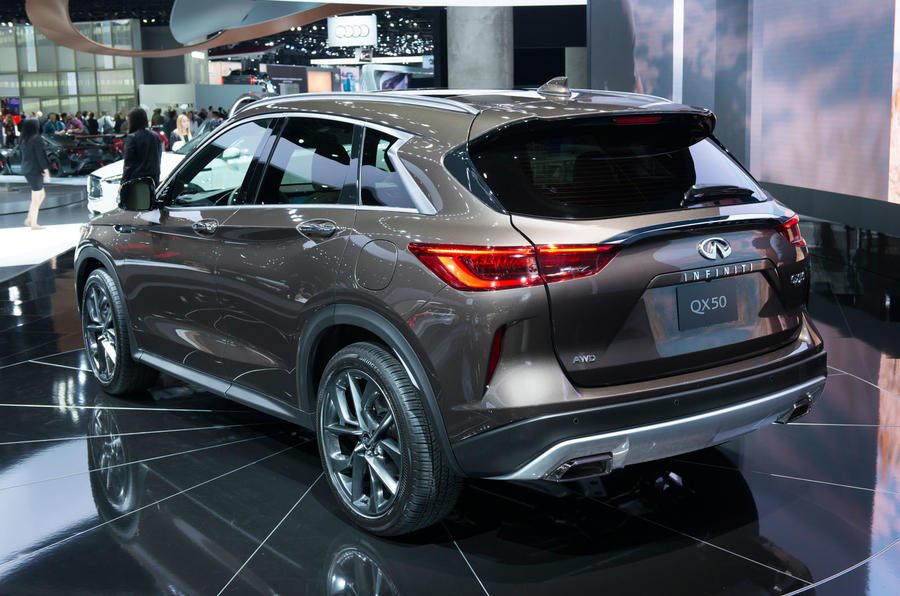Infiniti is bidding to crack Britain with its new QX50 – a car design boss Alfonsa Albaisa believes will finally show “the true potential of the brand”.
The Audi Q5 and BMW X3 rival, which slots into one of Europe’s fastest-growing segments and is on display at the LA motor show, will be the world’s first production car to feature a variable compression ratio petrol engine.
Autocar has already driven the QX50 prototype. Click here to read the review
The turbocharged 2.0-litre four-cylinder unit, called VC-Turbo, promises up to 35% improvements in efficiency compared to the old QX50’s 3.5-litre V6. It can seamlessly shift its compression ratio from 8:1 (for performance) to 14:1 (for economy), essentially giving the 268bhp and 280b ft engine the best traits of petrol and diesel engines.
The technology works by continuously raising or lowering the pistons’ reach to adjust the compression ratio. The movement is controlled by a multi-link system, the world’s first in a production car, and an electronic motor with a Harmonic Drive reduction gear that can move the crankshaft to alter piston position.

This new high-tech engine comes mated to a continuously variable transmission – the most efficient gearbox type – and drives the front wheels in standard form, although all-wheel drive is also available. The engine can accelerate the QX50 to 60mph in 6.3sec and on to a top speed of 143mph.
Infiniti’s sleek new model, inspired by the QX50 Concept of 2016, features a new platform the brand claims offers best in class cabin space. Boot space is 895 litres with the rear seats up, which is 345 litres more than the X3 and Q5. Space grows to 1048 litres with the rear seats forward, when they also offer the maximum 838mm of rear leg room, and 1699 litres with them down.

























































Join the debate
Add your comment
Sounds too good to be true!
Anyone notice the absence of actual comparative fuel consumption figures?
Upto 35% more efficient. Perhaps in the PR story but is it replicated on the road? And what is the benefit to fuel efficiency of the improved aerodynamics?
But of more obvious concern is just how big are the rear seats if you only gain 150 litres of boot space by folding them away?
Mercedes DiesOtto
Is this similar to Mercedes' DiesOtto engine which they working on around 10 years ago or so ago and was due to appear in some of their cars by now? If it is, could this be the same engine which Infiniti are using first as part of the Nissan/Renault/Daimler alliance?
Lanehogger wrote:
different engine. merc couldn't get it to work..
mpls wrote:
This just highlights Mercedes' lack of engineering prowess and technical knowhow. I'm sure this new engine will find its way in to some Mercs in the same way some superior Renault engines already do.
Roadster wrote:
Yeah and they had some clumsy
Yeah and they had some clumsy adjustable head thing that varied the compression.
Lanehogger wrote:
This Nissan tech. 20 yrs on the making.
Interesting
The thing is Turbo, VVT etc are possible/economic on super mini's will this tech be scalable?
Just as important is it more economically than a plug-in hybrid?